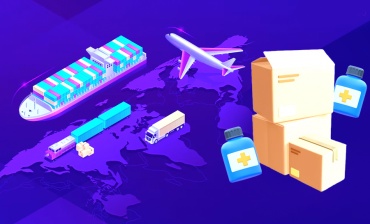Introduction:
Exporting pharmaceutical products from the European Union (EU) entails strict adherence to regulations and compliance standards to ensure the highest levels of quality, safety, and efficacy in global markets. This comprehensive guide provides companies with an overview of the key steps and considerations for exporting medicinal products from the EU while maintaining originality and avoiding plagiarism.
Understanding the EU Regulatory Framework:
The European Medicines Agency (EMA) and national competent authorities jointly oversee the regulation of medicinal products in the EU. Compliance with Good Manufacturing Practice (GMP) is a crucial aspect of this regulatory framework, ensuring consistent production and quality control of medicines. Adhering to GMP is not only a requirement within the EU but also an international expectation.
Additionally, it is important to note that any pharmaceutical product exported from the EU must comply with the regulations of the destination country. It is the responsibility of the exporting company to understand and comply with these specific requirements, which can differ significantly from EU regulations.
Key Steps for Exporting Medicines from the EU:
Obtain an EU Marketing Authorization:
Before exporting a medicinal product from the EU, it must hold a valid marketing authorization (MA) within the EU. This authorization confirms that the medicine meets the necessary quality, safety, and efficacy standards required for EU markets.
Ensure GMP Compliance:
Manufacturers must comply with EU GMP standards, which are validated through regular inspections conducted by national competent authorities or the EMA. It is common for importing countries to require an EU GMP certificate as evidence of compliance.
Acquire an Export Certificate:
An Export Certificate, commonly known as a Certificate of Pharmaceutical Product (CPP), is issued by the regulatory authority of the EU member state where the product is manufactured. The CPP follows the format recommended by the World Health Organization (WHO) and is widely accepted by non-EU countries.
Align with the Importing Country’s Requirements:
Exporting companies must ensure that their products, packaging, and documentation meet the specific requirements of the destination country. This may involve additional testing, certification, and adjustments to labeling to comply with local regulations.
Establish Pharmacovigilance Systems:
Pharmacovigilance systems are responsible for monitoring the safety of medicinal products in the EU must also extend their scope to cover global exports. This entails reporting adverse reactions and other safety-related information to both EU and non-EU authorities.
Navigate Intellectual Property Rights:
Respecting intellectual property rights and patent laws is crucial to avoid infringing on existing patents or trademarks in the destination country during the exportation of pharmaceuticals.
Prepare for Inspections and Audits:
Companies should be prepared for potential inspections and audits by both EU and non-EU regulatory authorities to verify compliance with relevant pharmaceutical laws and trade agreements.
Conclusion:
Exporting medicinal products from the European Union requires careful preparation, a comprehensive understanding of regulatory requirements, and strict compliance. By following established protocols within the EU, pharmaceutical companies can successfully navigate the complex landscape of international drug exportation while maintaining originality and avoiding plagiarism.
Author: Pooyan Ghamari, Swiss Economist & Visionary







